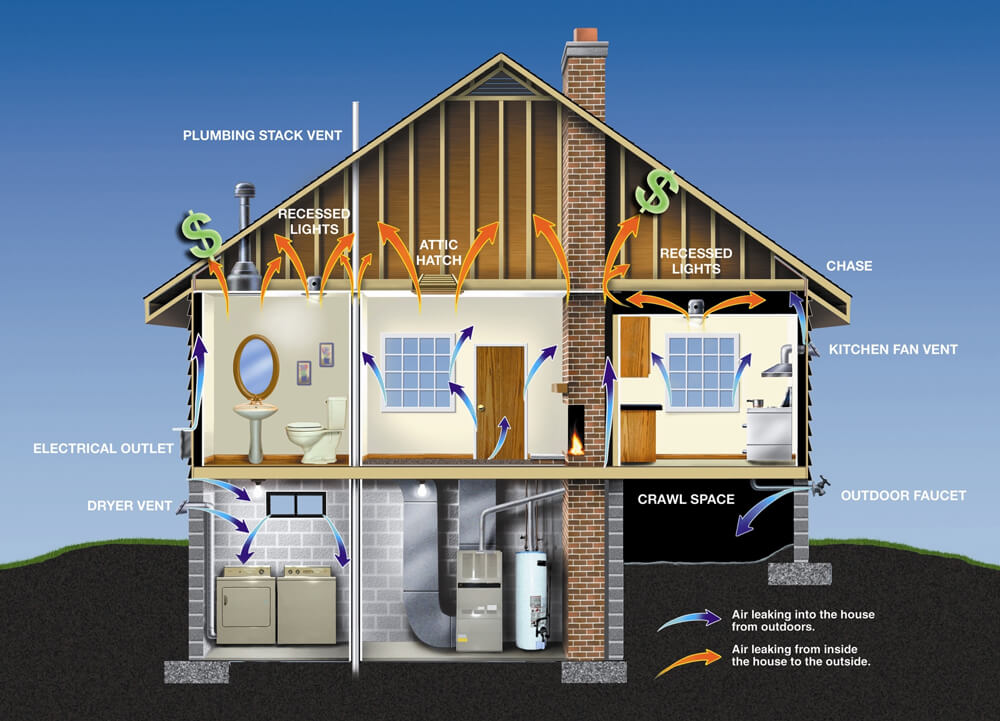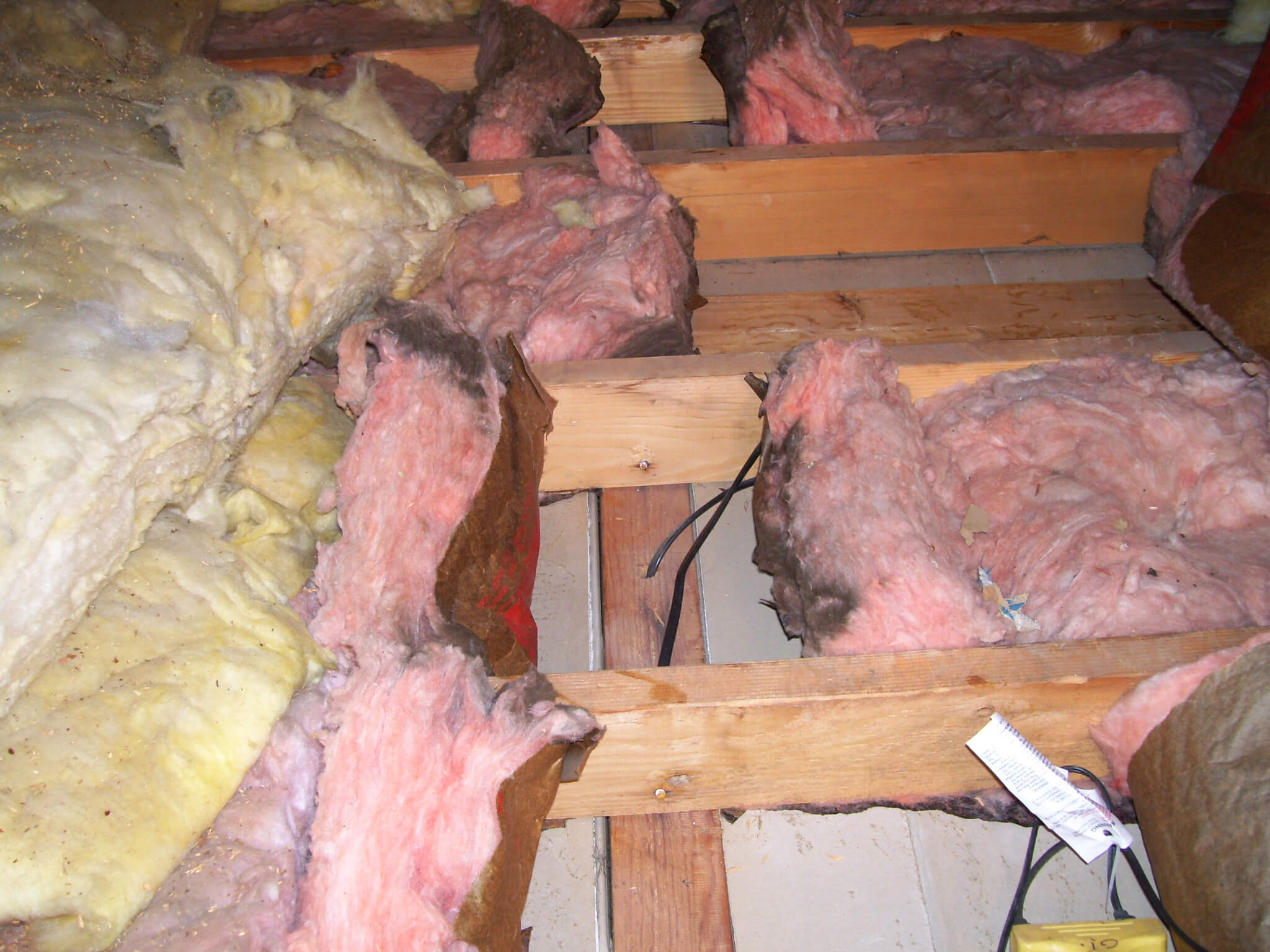Building Science – The Basics
 Most of us live in what is essentially a wood or concrete box. We pay to heat and cool this box and expect the box to be comfortable year-round. This simple sounding task is extremely complicated, and that is where a home performance expert comes into the picture.
Most of us live in what is essentially a wood or concrete box. We pay to heat and cool this box and expect the box to be comfortable year-round. This simple sounding task is extremely complicated, and that is where a home performance expert comes into the picture.
We need buildings robust enough to handle our cold winter days when it is 0 degrees outside and 70 degress inside, separated by 5 – 7 inches of building materials. The building also has to handle when it is 80 degrees and humid outside and 68 degrees inside, in a nutshell minimize the moisture potential and let it dry out.
“Stack effect.” Stack effect is a natural movement of air in and out of buildings. How it comes into play here is the extreme temperature differences our houses experience. Even with no wind, on those cold days warm buoyant inside air finds its way out near your ceiling and creates a pressure difference, like a vacuum drawing cold air in as illustrated to the right. But my house is new you say? There are A LOT of possibilities of gaps and cracks in both old AND new houses. We have found the more complex high-end homes to be some of the worst offenders because of the more complex framing.
The colder it is, the stronger the stack effect is. The other consequence to this is your warm house air being pushed out of your house can contain quite a bit of moisture which will then condense inside your walls and freeze. The opposite happens in the summer when the humid summer air is drawn in through your walls trying to get in.
So do walls need to breathe? No, walls need to be able to dry out. That does not mean air sealing creates a moisture trap, quite the opposite, it reduces the amount of uncontrolled air flowing in and out of your home or building. Air that you are paying to heat or cool. That is why basic air sealing is so valuable and worth looking at to lower your heating bills (studies vary but you’ll find 20% of heating and cooling costs to be attributed just to air leakage a common number) and increase your comfort as it reduces the drafty feeling.
We don’t recommend you hire us to spend days finding every little leak in your house, you will NEVER get your money back, (just like replacement windows, but that’s another topic) but give us 2 or 3 hours in your attic and an hour or two in your basement to find and seal the big offenders and suddenly you will get your money back in both energy savings and improved comfort.
In the picture below you can see the electrical wire holes and gaps between the framing and drywall which are air leaks from inside to the outside. This is verified by the insulation, see the dark staining? That is the dust and dirt from inside air being trapped by the fiberglass acting as a filter, leaking air day and night, year after year.

If you have an extremely “tight” house, one with very low air leakage you are going to want to provide some fresh air. So what are the options?
– WI code requires new furnace installations to have a fresh air intake installed into the furnace ducting which is great, but most installations are just a basic damper that cannot be metered as to how much fresh air is really coming in.
– Running a bath fan on a timer is a very simple method and referred to as exhaust only ventilation, remember air in equals air out so we exhaust 80 cubic feet per minute of air out a vent there is 80 cubic feet per minute coming in somewhere. You get what you pay for with bath fans, we recommend Panasonic. Cheap fans usually don’t exhaust what it says on the box, aren’t designed to run for extended periods and are loud. Loud because they’re cheap.
– HRV/ERV stand for Heat Recovery Ventilator or Energy Recovery Ventilator. Both have similar ideas, cross the incoming air stream with the outgoing air stream to warm up or cool the incoming air. With dedicated ductwork they are balanced air in and air out systems. We find most people don’t use their units, either find them too complicated or people see them as energy hogs since they usually run constantly.
Building science is about heat flow, air flow and pressures, moisture management and safety. We have the expertise and the equipment to listen to your concerns, test your home, and provide a written analysis along with recommendations.